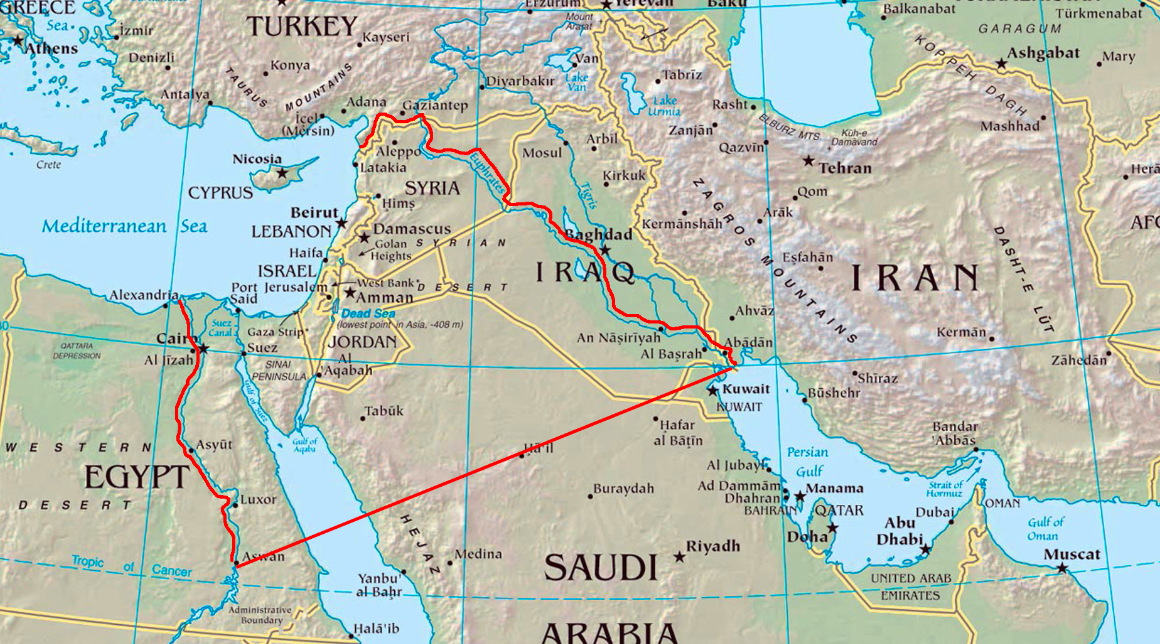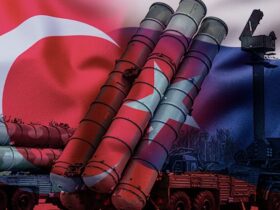Here are the details of the plan, its reflections on the ground, and its possible effects…
Here are the details of the plan, its reflections on the ground, and its possible effects…
By Adem Kılıç, Political Scientist/Writer
The remarks made by Tom Barrack, the US Special Representative for Syria, in recent months that ‘the Sykes-Picot era is now over’ have undoubtedly sparked a new debate.
While some commentators suggest that this is an admission that Western hegemony in the region is now being dismantled, I have opposed this view from the outset and continue to do so.
Why?
The Sykes-Picot Agreement, signed between Britain and France in 1916, soon brought Russia on board and implemented a plan to divide the Ottoman Empire’s territories in the Middle East at the negotiating table.
With this agreement, maps and country borders were drawn with rulers at the table, and a new Middle Eastern reality was brought to life.
Just one year after this agreement, the Balfour Declaration, considered to have laid the foundations for Israel, was announced.
In 1917, in a Middle East reshaped by the Sykes-Picot Agreement, the Balfour Declaration, announced by Arthur Balfour as British Foreign Secretary, paved the way for the establishment of a Jewish state on Palestinian lands.
In other words, these two turning points, along with the borders and understanding established at that time, laid the groundwork for the ongoing crises in Palestine and the Middle East today, while also securing Israel’s place in history as a global headache.
So why did Sykes-Picot end, according to Barrack?
To answer this question briefly, the borders drawn by Sykes-Picot now pose a serious obstacle to Israel’s expansionist goals, which it calls Arz-ı Mevud.
This is because the regional countries at that time, which had borders drawn with a ruler, were dependent on the West but not powerful, and were important in terms of accepting the existence of the State of Israel.
However, for Israel, which now believes it has complete power in the region and wants to achieve its expansionist goals, states with strong central structures limit Israel’s regional hegemony strategy and expansionist goals.
Therefore, in the ‘New Middle East’ envisioned by the West and Israel, there is now a need for the establishment of federated and fragmented states with weak central structures and borders that can be redrawn.
The statements frequently used by Netanyahu and Trump after the Gaza War, ‘We are creating a new Middle East,’ point precisely to this strategy.
The foundation of the new era is based on the Yinon Plan!
The ideological and strategic basis of the new Sykes-Picot era, shaped by the Yinon Plan, was laid out in 1982 by Oded Yinon, a senior official in the Israeli Foreign Ministry at the time.
An article published by Oded Yinon at that time quickly became the reference point for Israel’s hegemonic plans in the Middle East, and the plan was first attempted to be implemented in Lebanon.
This is because Yinon’s article claimed that adhering to the old Sykes-Picot borders no longer served Israel’s interests.
According to Yinon, the existence of small entities in place of large and resistant states surrounding Israel, the fragmentation of the states surrounding Israel and their division into ethnic or religious cantons would better serve Israel’s expansionist aims.
The plan proposed, for example, dividing Lebanon into five provinces and then immediately showed how Syria and Iraq could also be divided into ethnic and religious cantons.
The plan also aimed for a similar fragmented structure for other regions of the Arab world.
For these reasons, the strategy Israel is implementing today should be regarded as the reflection of the Yinon Plan on the ground and the second Sykes-Picot era.
The Yinon Plan’s reflections on the ground
Israel’s actions in the region over the past two years clearly demonstrate the plan being put into practice.
For while the genocidal war in Gaza continues, Israel has simultaneously carried out direct military attacks on the capitals of Syria, Lebanon, Yemen, Iran and Qatar, violating all the agreements it has signed throughout its history and attempting to implement its strategy of fragmenting its neighbors.
The intense war being waged in Gaza and the violation of the 1979 peace agreement signed with Egypt stand out as examples of the redrawing of borders. At the same time, Israel took steps such as expanding the buffer zone in Lebanon, establishing permanent so-called security points at strategic locations, and annexing more Syrian territory beyond the Golan Heights, which it already occupies.
Furthermore, in line with the Yinon Plan, it has sought to prevent the emergence of a strong, centrally governed neighboring country by supporting Druze groups and so-called Kurdish (SDG/PKK) groups, with the goal of a fragmented Syria, and it continues these efforts.
At the same time, it continues to act on this plan through attacks it has organized in Iraq and Yemen, which are already divided into three parts.
All these developments reveal that the borders drawn by Sykes-Picot are no longer sufficient for Israel’s objectives, and that it has taken action to reshape them.
Conclusion: A new Sykes-Picot era has begun!
All this data clearly shows that statements such as ‘the Sykes-Picot era is over’ actually herald the beginning of a new era, namely the ‘New Sykes-Picot Era centered on the Yinon Plan’.
This is because flexible, fragmented structures, rather than powerful centralized states, will now serve Israel’s strategic objectives better in the region.
The map of the Middle East is being reshaped along ethnic and sectarian lines.
According to Israel, instead of the borders drawn at the negotiating table by Sykes-Picot, an order is being established for the region that is fragmented, controllable, and suited to Israel’s expansionist goals, as indicated by the Yinon Plan.
All developments in the Middle East can be seen as concrete reflections of this strategy on the ground, and it appears that unless Israel is stopped, a new and destructive process awaits the Middle East.

















Leave a Reply